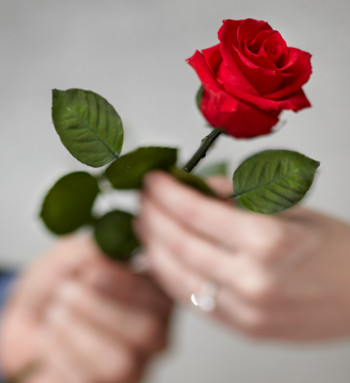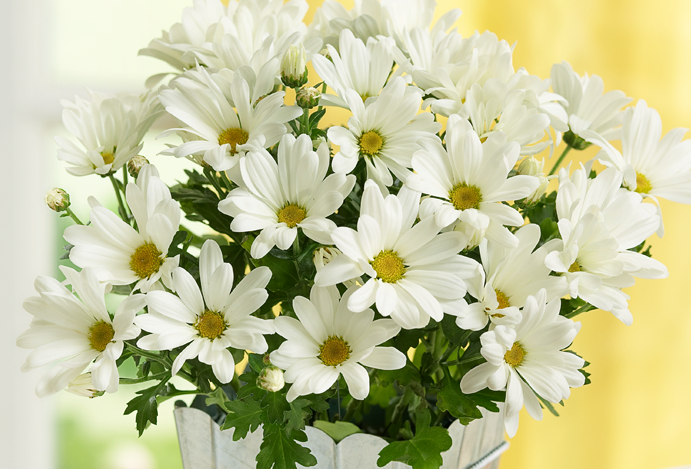Symbolic Flowers in Movies
Read about symbolic flowers in movies, from the rose in "Beauty and the Beast" to Daisy from "The Great Gatsby," and learn their meanings.
Jul 16, 2016

Flowers can be symbolic in a number of ways and for a number of a reasons, but one of our favorites is the use of flowers in movies. From the type of flowers used to their placement throughout films, many directors have relied on flowers to give beautiful meaning to their movies.
Here are our 10 films in which flowers played a significant role.
Beauty and the Beast
In Disney’s classic "Beauty and the Beast," the rose is used to symbolize love and the ability to love. In the movie, the beast is told that the enchanted rose will bloom until he turns 21 years old, and if he can learn to love again before it died, the spell placed on him would be broken.
The Wizard of Oz
In 1939, Judy Garland amazed us all with her performance in "The Wizard of Oz," but we were also equally amazed with the famous poppy flower scene. In one of the most vibrant scenes of the film, Dorothy is found sleeping in a large field of scarlet poppies, which have long been used to represent sleep and peace.
The Hunger Games

Flowers have been used several times throughout The Hunger Games trilogy, both in physical form and through characters’ names. Some examples include “Buttercup,” the name that Primrose Everdeen gave her cat due to the color of his coat; dandelions, which became a symbol of hope for Katniss Everdeen after seeing Peeta near a field of dandelions after he saved her from starving to death; and white roses, which remind Katniss of Peeta and several other events that unfolded throughout the series.
American Beauty
Sam Mendes’ Oscar-winning film "American Beauty" is another film in which red roses played a large role. Throughout the film, the rose is said to symbolize Lester’s desire and lust for Angela; in one of the most memorable scenes, we see Angela covered in roses while lying on a bed covered in rose petals. Did you know “American Beauty” is also the name of a type of rose?
Alice in Wonderland
"Alice in Wonderland" is yet another movie that relies on roses for symbolic meaning. One example is the scene in which card gardeners paint white roses red after accidentally planting the wrong color for fear of the Queen of Hearts. Some believe that painting the roses symbolizes working to hide what or who you really are in order to avoid the consequences.
Big Fish

In Tim Burton’s iconic film "Big Fish," daffodils take center stage as the flower of choice. One scene shows Sandra opening the window to find Edward in a field of daffodils, which we learn were planted for her. Here, daffodils are meant to symbolize Edward’s love and respect for Sandra.
Vertigo
Alfred Hitchcock’s film "Vertigo" makes excellent use of flowers, starting with the scene where Madeleine is in the flower shop. Some say that the bouquet she purchases represents her fragile personality; not only are the flowers delicate like she, but later we also see her standing at the edge of San Francisco Bay plucking the petals, foreshadowing the destruction of her fragile self.

The Great Gatsby
One of the most obvious uses of flowers in "The Great Gatsby" is through the character Daisy Buchanan. Daisies, which are known to be a fragile flower, are said to represent characteristics and traits such as purity, beauty, and innocence (the outer white color), as well as corruption (the middle yellow color) — all traits that match Daisy’s personality. Additionally, some sources also believe that the use of flowers throughout the movie work to symbolize the overarching idea of life and death.
Last Tango in Paris
In the film "Last Tango in Paris," we see a scene in which Rosa, Marlon’s wife who has passed away, is lying in an open casket surrounding by pink and purple flowers. Flowers, which at funerals symbolize feelings such as love and sympathy, make perfect sense in a scene like this considering the circumstances. As Marlon Brando completes his monologue to Rosa, we seem him take petals from the flowers to try and wipe off the amount of makeup put on Rosa and unveil her natural beauty.
The Town
"The Town," starring Ben Affleck (Doug MacRay) and Pete Postlethwaite (Fergie), honors Irish American mobster Dean O’Banion, a Chicago florist and floral designer. In the film, Fergie runs a Boston florist (like O’Banion), and several scenes show Fergie arranging flowers while at work, giving viewers an inside look at what it takes to run a flower shop. For this example, the use of flowers symbolizes the real-life experiences of the individual on which the movie is based.







